Gaming and the best PC monitors go hand in hand. However, you can also get the most out of your favourite console by investing in a great gaming monitor. Play your PlayStation like never before with these monitors for the PS5 that bring gorgeous visuals, stunning high refresh rate performance, and an array of mesmerising screen technology all packed in the convenience of a smaller screen.
Utilise the PS5's power with the ultimate gaming monitors of the year, each of which has been carefully picked to satisfy any manner of gamer: be they hardcore FPS shooter enthusiast in need of pin-point accuracy and control, or mesmerised explorer of fantastical worlds, looking to tease out every detail.
Whether you're gearing up to delve into Elden Ring's magnificent new DLC: The Shadow of the Erdtree, or you're carving through hordes of enemies in the ever-enthralling Helldivers 2, a fantastic PS5 monitor is sure to bring each PS5 title to life with unbeatable performance and breathtaking visuals.
Yet for those who have delved into the competitive world of the monitor market, you'll quickly find that it's no walk in the park. From each dizzying screen technology to towering price point, you'll be out of pocket in a heartbeat if you don't know what you're paying for, which is why we're here.
Dedicated to delivering the best gaming experience at a terrific price, we at What's The Best have gathered our favourite PS5 monitors of the year so far into one comprehensive roundup. Whether you're short on cash, or bursting with it, there's bound to be the perfect option for you and your next-generation gaming setup.
Having experienced the commotion of tech specs, we've decided to tackle terminology in an easy-to-digest manner, which you'll find near the bottom of the article. Unsure what you've just read? Check out the FAQs for some friendly advice.
You've just got your hands on the PS5, possibly the best console on the market right now, you rush home, unbox it, and plug it into your 10 year old flatscreen for a visual experience almost the same as the one you've had with your PS4. What is the point in upgrading if it looks like this? Well, a bit of kit like the PS5 deserves the very best, which is why we've compiled a list of the best monitors for the PS5 to give you the gaming experience you deserve.
The best monitors for the PS5 of 2024 at a glance:
Now able to function at 60FPS at 8K, or even 120Hz at 4k, there has never been a more powerful console on the market, and power like that needs the right place to shine. Enter, gaming monitors. Designed for PC gaming first, there is now a large selection suited perfectly to the PS5, and we rank them for you below. So start sorting out your favourite game to try first, as we jump into the list.
The best monitors for the PS5 of 2024
All prices are correct at the time of writing. Prices, stock and deals are subject to change without notice.
Best overall
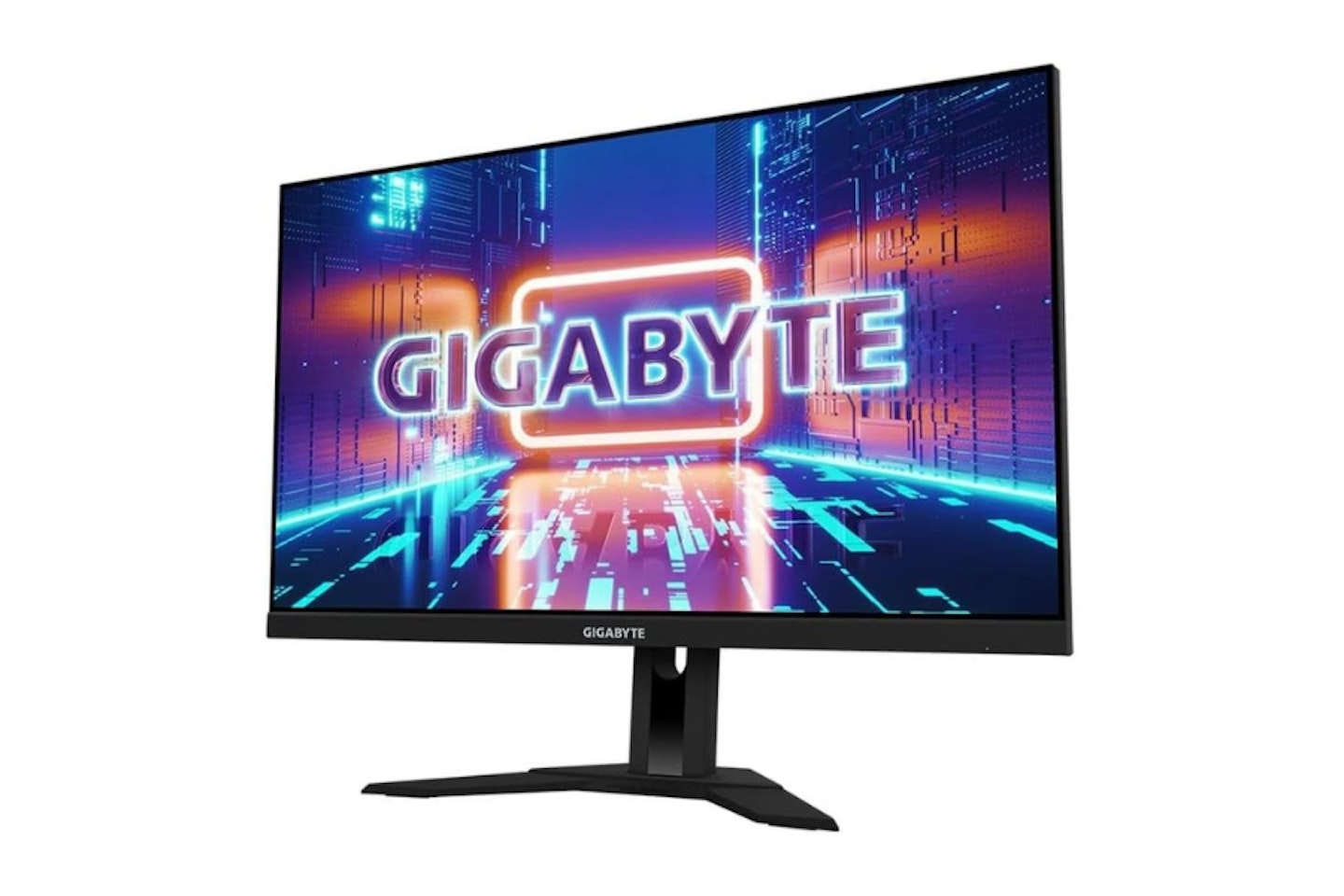 Gigabyte
Gigabyte Decisively taking the top spot this year, the Gigabyte M28U monitor for the PS5 is a stellar, performance-heavy monitor that handles everything, including ultra-HD visuals, and 144Hz performance, as well as keeping below £500.
A slick, stunning monitor that leaves you wanting for nothing visually, the Gigabyte M28U boasts one millisecond response times and an enormous array of ports for an unprecedented level of connectivity at its price point.
A fantastic colour gamut, impressive visuals and stellar performance, it's genuinely difficult to fault the Gigabyte M28U monitor, in all its glory. Some, however, may suggest that the overall design of the M28U is a little plain, unlike the screen, leaving a fairly standard impression on users as far as monitors go.
This, however, is a matter of opinion: the slick, rigid design is part of the M28U's futuristic charm and allure, and it's kept many PlayStation 5 players staring at it for hours straight. A brilliant gaming monitor, and one of the best of the year from our perspective, especially for its price.
Pros
- Incredible 4K visuals
- Unbeatable 144Hz performance
- Excellent connectivity for a multitude of devices
Cons
- The overall design is quite plain
| Resolution: | 4K Ultra HD, 3840 x 2160 pixels |
| Screen size: | 28 inches |
| Screen type: | SS IPS LED |
| Refresh rate: | 144 Hz |
| Response time: | 1 ms |
| HDR: | Supports HDR, specifically DisplayHDR 400 |
| Ports: | HDMI 2.1 x 2, DisplayPort 1.4 x 1, USB 3.0 downstream x 3, USB 3.0 upstream x 1, USB Type-C x 1 |
| Colour support: | 8-bit color, 94 per cent DCI-P3 |
| Brightness: | 300 nits |
| Viewing angle: | 178 degrees |
2.
KOORUI FHD
Best budget
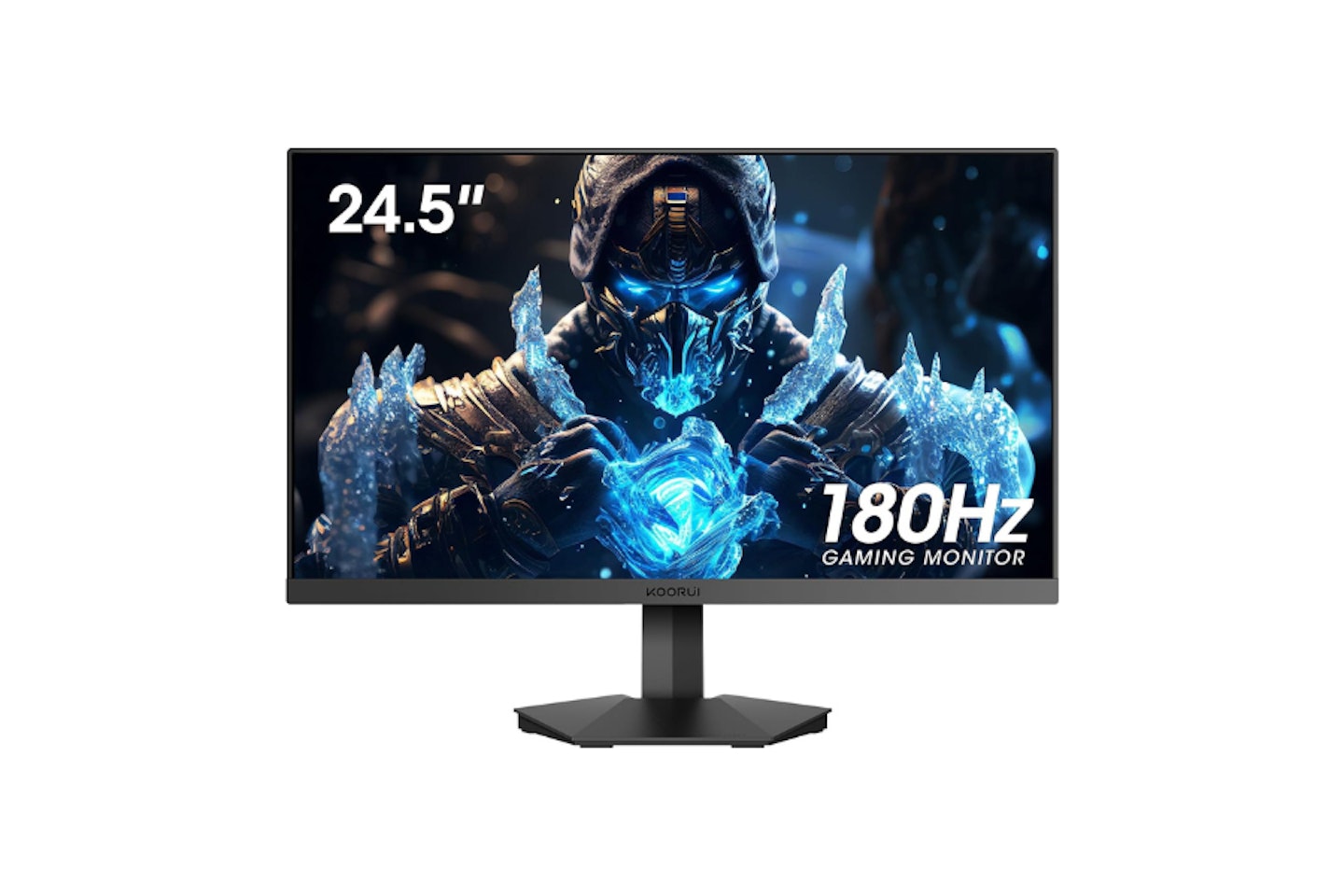 KOORUI
KOORUI A brilliant budget monitor in terms of performance, the KOORUI 24.5-inch monitor is perfect for solid full-HD visuals and searing 144Hz gameplay for the most competitive of players. With a maximum refresh rate of 180Hz when using a DisplayPort, you're likely to see why this monitor is considered by many to be a bargain.
A fantastic design, complete with ultra-thin bezels, and a light design looks as though its price should greatly exceed its own, and yet it comfortably sits at the less than £130 margin. Of course, as the PS5 is the very cutting-edge of the next generation, it can quite capably run games at 4K up to 120Hz. While you might be getting the top-tier performance you'd expect from a speedy FPS, you're not getting the visual beauty that you'd find in pricier models.
For those on a budget desperate simply to just experience the latest PlayStation exclusives, we're looking at you, Spider-man 2, then you've found a cracking deal of a monitor that'll outshine its competition by a landslide.
Pros
- Incredible 144Hz refresh rate
- Gorgeous ultra-thin design
- Phenomenal value
Cons
- Full HD doesn't utilise the full capabilities of the PS5
| Resolution: | Full HD, 1920 x 1080 pixels |
| Screen size: | 24.5 inches |
| Screen type: | VA |
| Refresh rate: | 144Hz (up to 180Hz with DisplayPort) |
| Response time: | 1 ms |
| HDR: | Not supported |
| Ports: | HDMI 1.4 x 2, DisplayPort 1.2 x 1 |
| Colour support: | 99 per cent sRGB |
| Brightness: | 250 nits |
| Viewing angle: | 178 degrees |
For those seeking to chase the best graphics possible, you'll want a 4K screen like the ASUS TUF Gaming VG289Q. With pixel density this impressive, you can be sure that you'll get the best out of every inch of this screen. Speaking of which, at 28 inches, it's a fairly big display too.
It's not just about resolution, though, as this monitor has the other specs to back it up. A 5ms response time, HDR10, 1073.7M colour support, and 350 nits of brightness ensure that the VG289Q always looks as good as it possibly can. While 60Hz seems like a lesser refresh rate compared to other entries on this list, in practice it still performs very well.
This monitor was tried and tested by Kyle Purves, who has this to say about their experience: "The menus are easy to navigate, in part thanks to the convenient controls on the side of the display. We always appreciate when a display can be adjusted, and the inclusion of different levels of Blue Light protection is fantastic for preventing eye strain.
"I do find the ports to be a bit of a drawback. They're fairly high up around the back, making it difficult to reach and change them without feeling as though you are fumbling about."
Read the full ASUS TUF Gaming VG289Q Monitor review
Pros
- Handy blue-light settings
- Easy-to-navigate menus with plenty of settings
- Excellent visuals specs
Cons
- Ports are difficult to reach
| Resolution: | 4K |
| Screen size: | 28 inches |
| Screen type: | LCD LED |
| Refresh rate: | 60Hz |
| Response time: | 5 ms |
| HDR: | HDR10 |
| Ports: | HDMI x 2, Display Port, Earphone Jack |
| Colour support: | 1073.7M |
| Brightness: | 350 nits |
| Viewing angle: | 178 degrees |
The AOC Gaming CQ27G2SE is a top choice for PS5 gamers who want to balance performance and visual fidelity. This 28-inch 4K UHD monitor boasts stunning colour accuracy and sharp detail, making it a solid option for those who appreciate crisp graphics. With HDR10 and Adaptive-Sync support, the CQ27G2SE ensures smooth, tear-free gaming while delivering vibrant visuals that bring games to life.
We think the AOC CQ27G2SE stands out for its ergonomic design, which offers height, tilt, swivel, and pivot adjustments. This makes finding the perfect viewing angle easy and enhances comfort during extended gaming sessions.
This was tried and tested by Chris Duffill, who has this to say about his experience: "As a gamer who appreciates both smooth gameplay and high visual quality, I found the AOC Gaming CQ27G2SE to be a solid performer. The 4K resolution on this monitor is excellent, especially for PS5 games that support it, delivering crisp and detailed visuals that enhance immersion. The HDR10 support was also a plus, adding more depth to colours and contrast, which I noticed particularly in games like Spider-Man: Miles Morales and Ratchet & Clank: Rift Apart."
"The CQ27G2SE's Adaptive Sync feature impressed me as well. It kept the gameplay smooth, with no screen tearing or stuttering, which is crucial when playing fast-paced action games. The adjustable stand made it easy to find the most comfortable viewing angle, and overall, I found the build quality to be robust and reliable. If you're looking for a monitor that pairs well with the PS5, this one is definitely worth considering."
Read the full AOC Gaming CQ27G2SE monitor review
Pros
- Excellent immersive curved panel
- Adjustable 165Hz refresh rate and Adaptive Sync
- Solid build with a sleek gamer aesthetic
Cons
- 1440p - not 4K
| Resolution | 2560 x 1440 (QHD) |
| Screen size | 27 inches |
| Screen type | Curved VA panel |
| Refresh rate | 165Hz |
| Response time | 1ms (MPRT) |
| HDR | HDR10 |
| Ports | 2 x HDMI 2.0, 1 x DisplayPort 1.2, 1 x Audio line-out |
| Colour support | 120% sRGB, 92% DCI-P3 |
| Brightness | 250 nits |
| Viewing angle | 178° horizontal / 178° vertical |
Best visuals
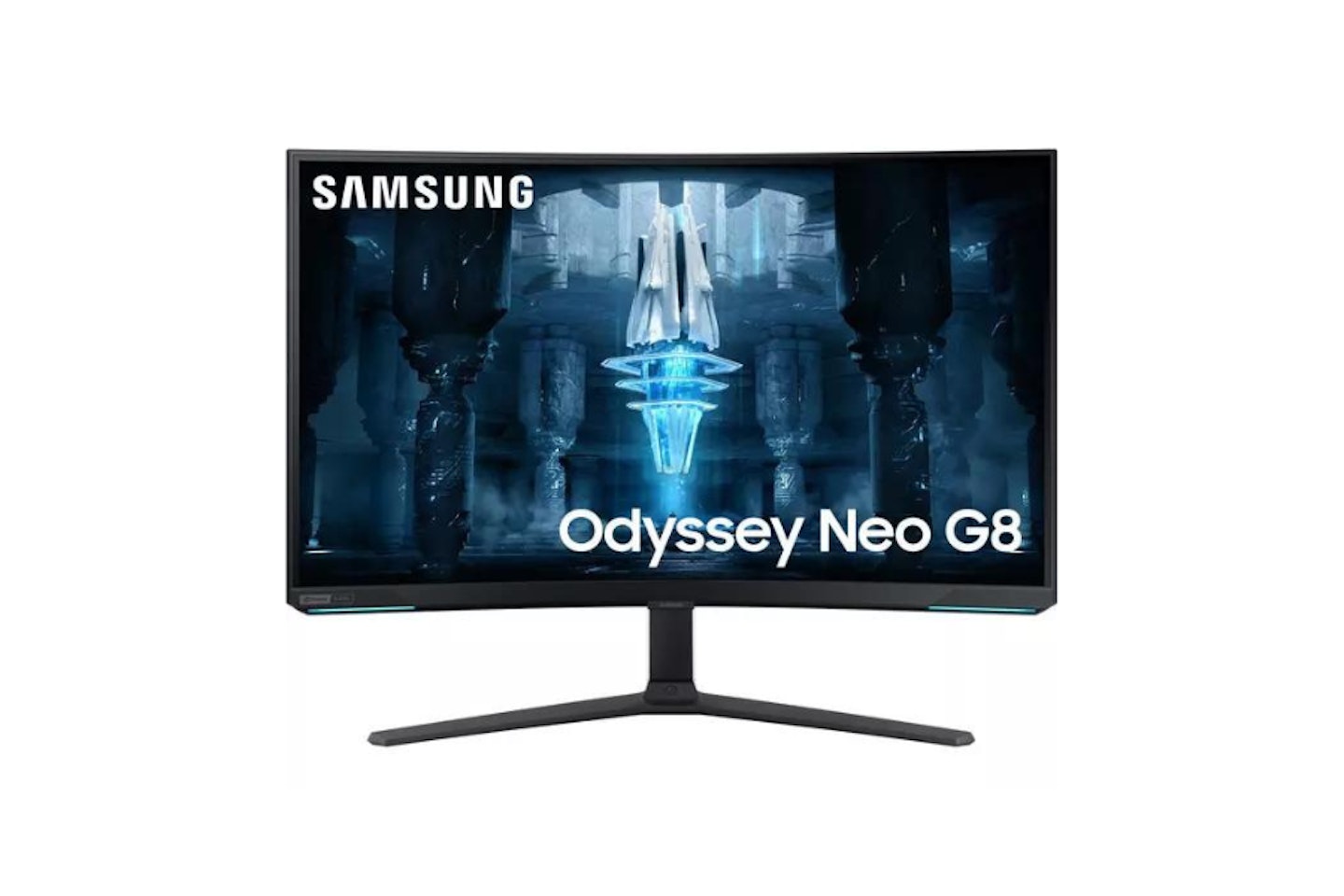 SAMSUNG
SAMSUNG Certainly steering away from the budget side of the aisle, the Samsung Odyssey Neo G8 is a monster of a monitor: packed with the very best in performance and visuals that'll tease the most detail out of your PS5 titles.
A larger 32-inch monitor with 4K visuals and a superb 240Hz refresh rate, the Odyssey Neo G8 has the best of both worlds in its seamless performance and mindblowing visual beauty. Open-world games such as Dragon's Dogma II and Baldur's Gate III both look exceedingly brilliant on this unbeatable monitor, holding no bars when it comes to speed and detail.
For some users, they find the bulk of the Odyssey Neo G8 to be a little larger than they'd expect from such a modern monitor, but the additional bulk comes with being a curved monitor, especially one with such impressive hardware.
Hands-down one of the best curved gaming monitors ever made, and certainly a contender for one of the best of the year, the Samsung Odyssey Neo G8 is a phenomenal monitor worth your strong consideration.
Pros
- Excellent 32-inch monitor size
- Phenomenal 4K visuals
- Superb 240Hz refresh rate and ultra-seamless 1 ms response time
Cons
- Bulkier than typical monitors
| Resolution: | 4K Ultra HD, 3840 x 2160 pixels |
| Screen size: | 32 inches |
| Screen type: | VA panel, Quantum Matrix Technology, Quantum Mini-LED |
| Refresh rate: | 240Hz |
| Response time: | 1ms |
| HDR: | Quantum HDR 2000 |
| Ports: | HDMI 2.1 x 2, DisplayPort 1.4 x 1, USB 3.0 x 2 |
| Colour support: | 95 per cent DCI-P3 |
| Brightness: | 350 nits typical brightness, 2000 nits peak brightness |
| Viewing angle: | 178 degrees |
Best performance
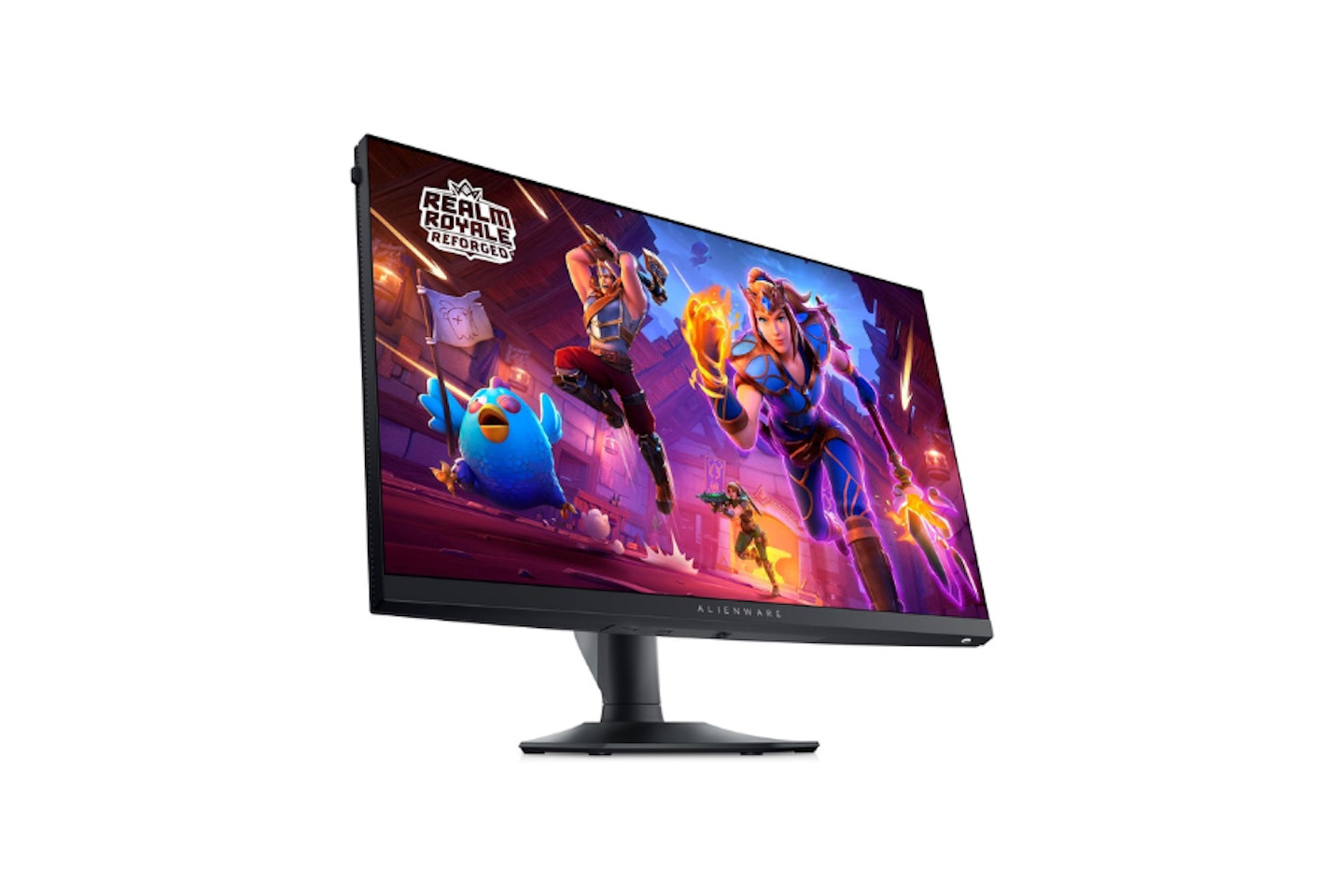 Alienware
Alienware If speed is your absolute priority, it's tough to contest the sheer superiority of the Alienware AW2724HF monitor, a standout in the monitor market as a budget powerhouse. Where speed knows no bounds, if you're looking for an incredible amount of smoothness and tear-free gameplay, Alienware's singularly quick AW2724HF monitor steals the show, offering what is some of the best performance we've had the pleasure of coming across.
A vast 360Hz refresh rate is a technology we'd expect to have seen in the far distant future, and yet in the AW2724HF, it's not only here, it's cheap. Bold and beautiful, this sensational monitor hardly falters in performance and is on the verge of instant when it comes to responsiveness.
As is common amongst high refresh rate monitors, however, the Alienware AW2724HF monitor doesn't run at 4K, rather it sits comfortably at full HD resolution. Certainly acceptable, but not utilising the PS5's full potential, we'd certainly like a little higher resolution, but a monitor capable of both 360Hz gameplay and 4K visuals is bound to cost a huge amount of cash.
What's more, the PS5 is yet to reach the technological capabilities of running at 360Hz, with a cap of roughly 120Hz, meaning you're largely paying for a technology you're not likely to use. For those of us with PCs, however, the versatility of a 360Hz monitor is certainly something to keep your eye on.
A mighty monitor in all aspects, the Alienware AW2724HF monitor is a rare and impressive bargain from a manufacturer that rarely offers monitors at a low price, if you can afford it, you should certainly consider grabbing it.
Pros
- Incredible 360Hz refresh rate
- Fantastic Alienware design
- Fantastic connectivity
Cons
- Standard colour depth and resolution
| Resolution: | Full HD, 1920 x 1080 pixels |
| Screen size: | 27 inches |
| Screen type: | LED-backlit LCD monitor / TFT active matrix, Fast IPS |
| Refresh rate: | 255Hz (360Hz with DisplayPort) |
| Response time: | 0.5 ms |
| HDR: | HDR10 |
| Ports: | HDMI x 1, DisplayPort x 2, USB 3.2 Gen 1 downstream x 4, USB 3.2 Gen 1 upstream x 1 |
| Colour support: | 99 per cent sRGB |
| Brightness: | 400 nits |
| Viewing angle: | 178 degrees |
Best budget 4K monitor
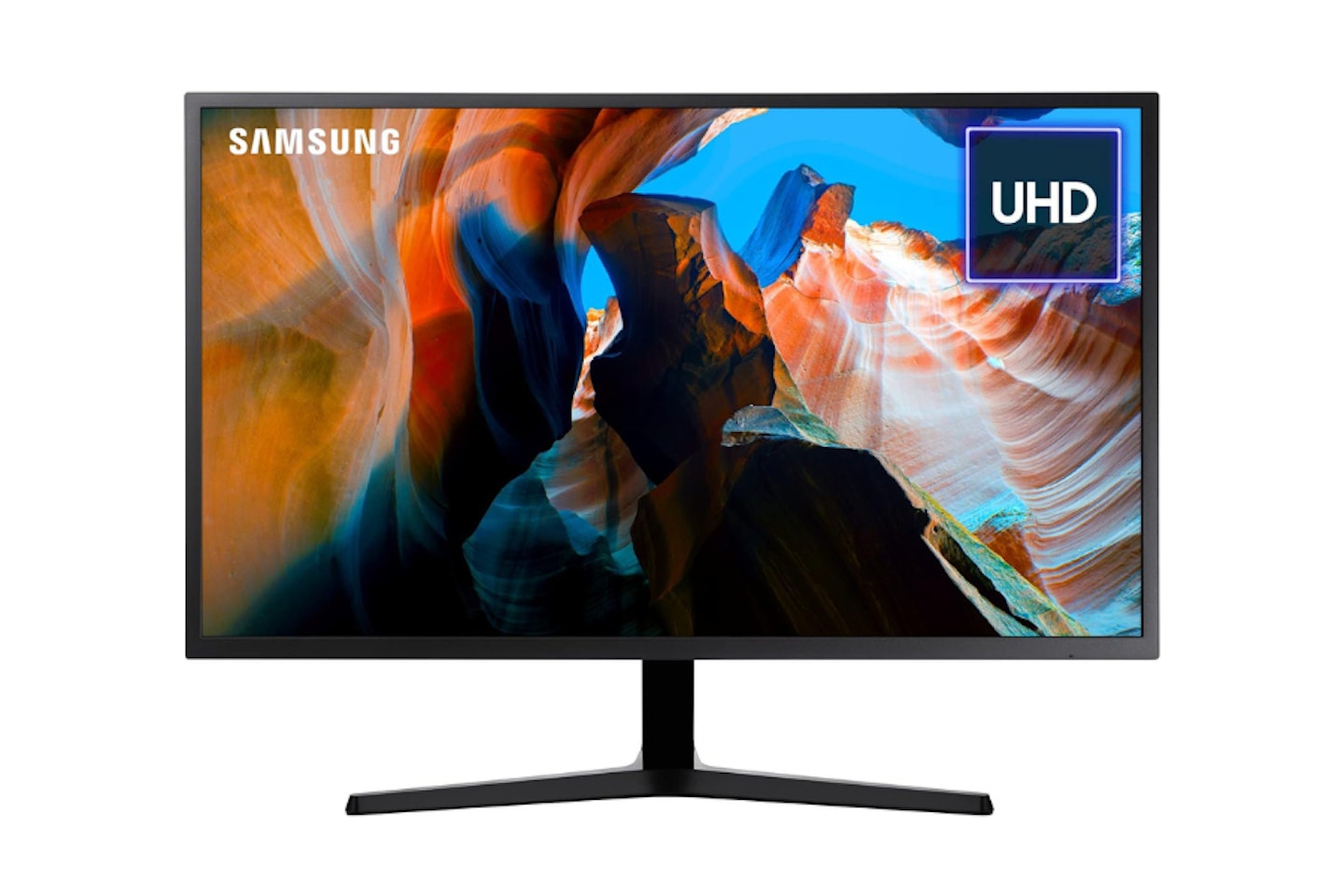 Samsung
Samsung What good is a PlayStation 5 if you're not utilising its 4K capabilities? If you're short on cash and are dying to see how The Last of Us 2: Remastered was intended to look, then you might want to consider purchasing the Samsung LU32 32-inch monitor, a phenomenally cheap monitor from master manufacturers, Samsung.
Impressively designed, packed with the most gorgeous visuals imaginable and all for less than £250, you cannot deny the value of the L32 monitor that's taking the budget market by storm. A strong array of ports, including both DisplayPort and HDMI, as well as a tough, but slightly rigid design that doesn't allow for much customisation, the LU32 feels like quality, despite its shortcomings.
At a fraction of the price of other 60Hz monitors, a major setback of the LU32 is its limited refresh rate, which caps at 60Hz. Though not ideal, especially for PS5 gamers who have access to double the LU32's refresh rate, you won't find a more visually stunning monitor at its price, it's just that simple.
A great all-around 4K monitor that offers terrific value and incredible build quality, Samsung has done it again with its near-perfect LU32 monitor.
Pros
- Stunning UHD picture quality
- Solid design and build quality
- Excellent value
Cons
- Standard 60Hz refresh rate
| Resolution: | 4K Ultra HD, 3840 x 2160 pixels |
| Screen size: | 32 inches |
| Screen type: | LED |
| Refresh rate: | 60 Hz |
| Response time: | 4 ms |
| HDR: | Not supported |
| Ports: | HDMI 2.0 x 2, DisplayPort x 1 |
| Colour support: | 99 per cent sRGB |
| Brightness: | 270 nits |
| Viewing angle: | 178 degrees |
Best OLED monitor
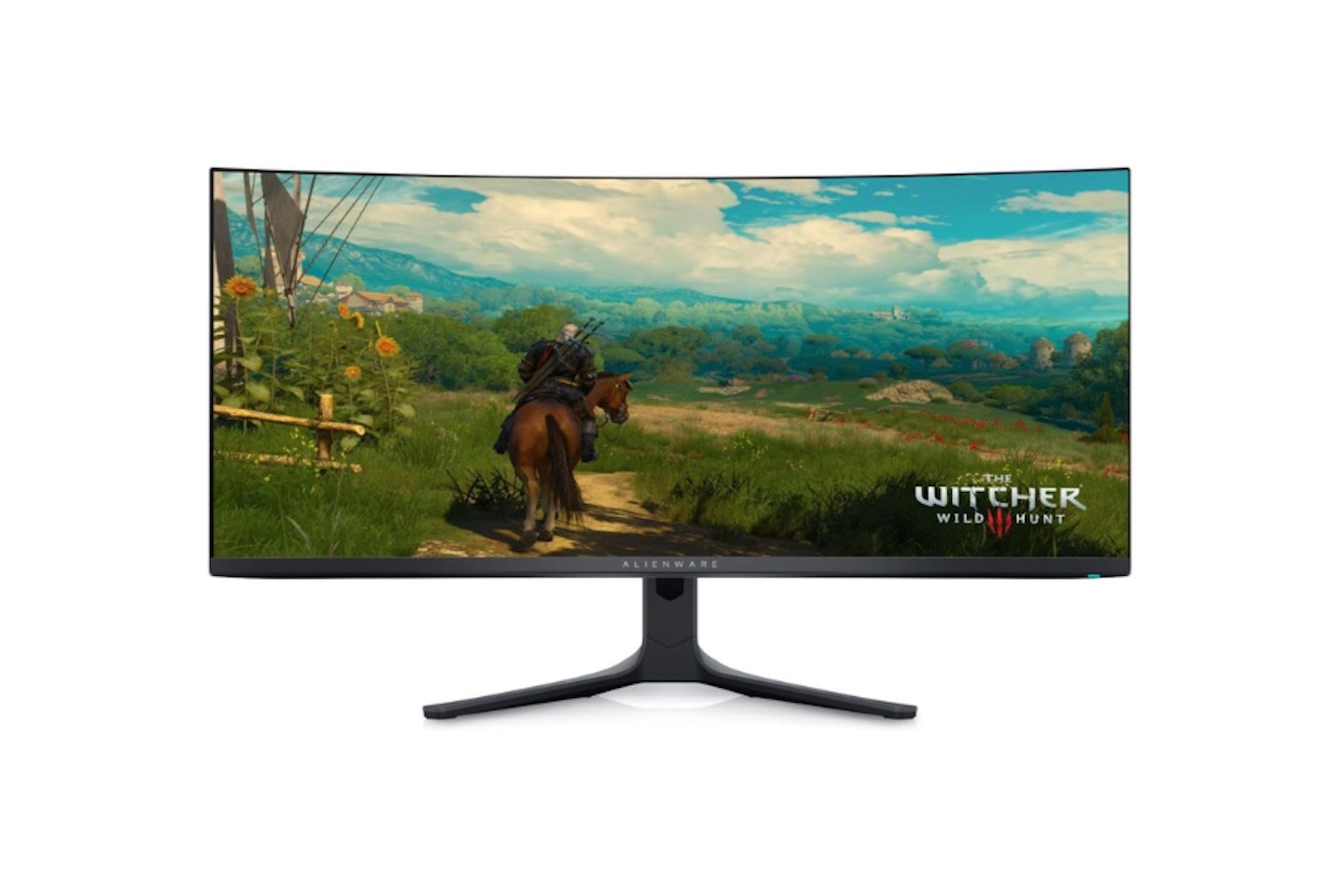 Alienware
Alienware Reaching the shores of monitors worldwide, the Alienware AW3423DWF monitor is no ordinary monitor, possessing one key brilliant screen technology that outcompetes them all: OLED. This remarkable screen technology found often in only the priciest televisions, gone is the traditional backlight of a monitor and here to stay are self-lit diodes which can turn on and off in an instant.
The result of OLED technology is an infinite contrast ratio: colours with real depth, shadows that are truly black, and incredibly quick response times. In that regard, the Alienware AW34 is no exception, its refresh rate reaches upwards of 165Hz and it has a response time of just 0.1 ms, a fraction of typical monitors.
Visually, the Alienware AW34 is stunning: though it isn't a true 4K ultra-HD monitor, it's WQHD screen technology is enough to entice the most devoted of PS5 players. Experiencing OLED quality on such a precise, well-sized monitor is enough to convince most gamers, but it shouldn't come without warning.
1440p isn't as sharp as standard 4K monitors, despite its ultra-high price point, so once again you're not getting the best out of your PS5. PlayStation has only recently begun to support 1440p screens, so make sure your system is well and truly up to date before buying.
Pros
- QD-OLED screen technology is beautiful
- Curved screen design is immersive and eye-catching
- The 165Hz refresh rate is perfect for smooth gaming
Cons
- Doesn't reach the visual heights of a 4K monitor
| Resolution: | WQHD, 3440 x 1440 pixels |
| Screen size: | 34.18 inches |
| Screen type: | Quantum Dot OLED (QD-OLED) |
| Refresh rate: | 100Hz (up to 165Hz with DisplayPort) |
| Response time: | 0.1 ms |
| HDR: | VESA DisplayHDR TrueBlack 400 |
| Ports: | HDMI 2.0 x 1, DisplayPort 1.4 x 2, USB 3.2 Gen 1 x 5 |
| Colour support: | 99.3 per cent DCI-P3 |
| Brightness: | 1,000 nits |
| Viewing angle: | 178 degrees |
Best 32-inch
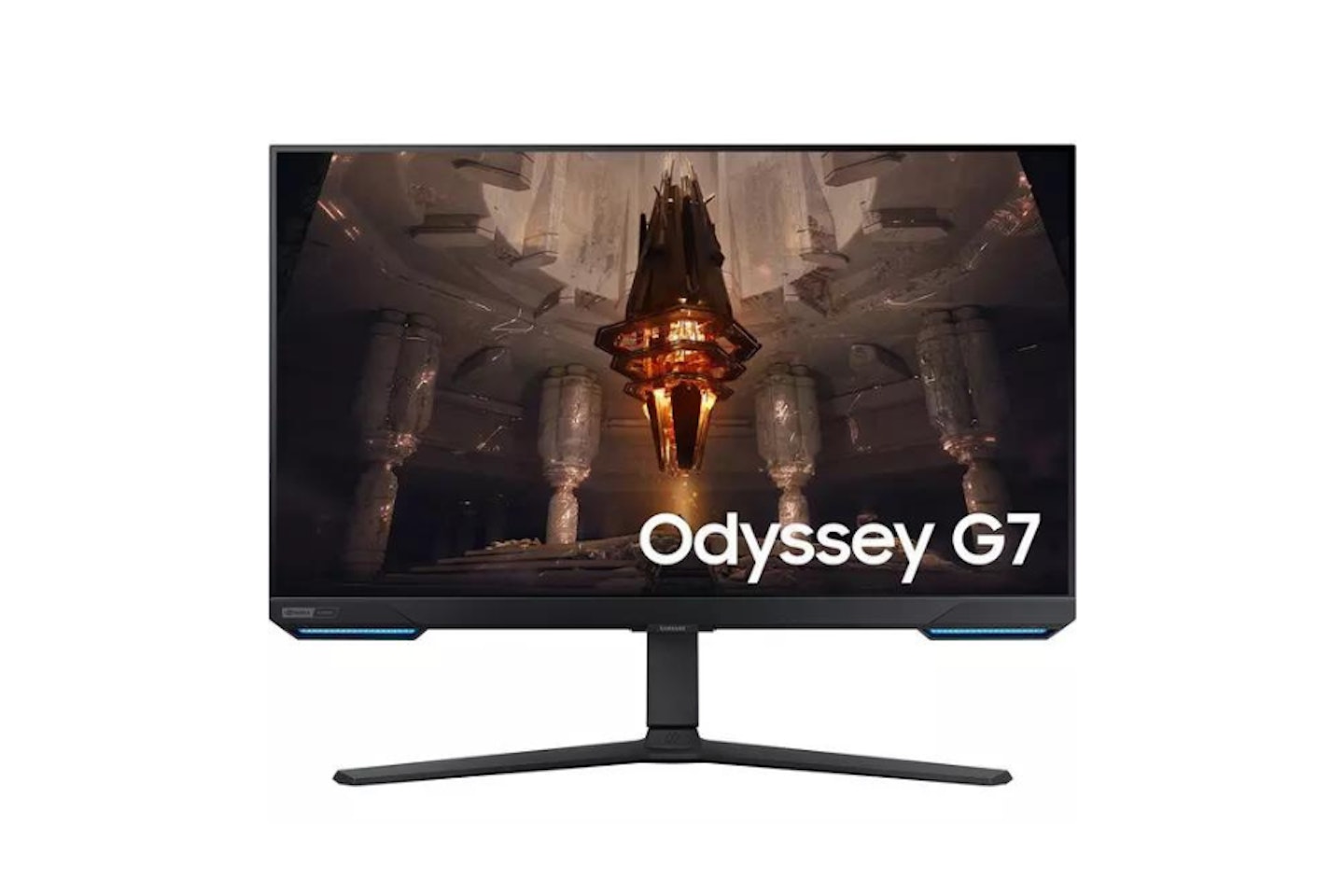 Samsung
SamsungA tremendous value 32-inch monitor from Samsung, the Odyssey G7 is a fantastic mid-range choice for those eager to delve into the world of 4K gaming, but aren't ready to give up high refresh rate gaming.
Not exceeding thousands of pounds, but not cheap either, Samsung's Odyssey G7 comfortably sits in the well-priced region of high-performance monitors that work incredibly well with the PS5. What's more, it's one of the best 32-inch monitors of the year, and its size is perfect for comfortable space efficiency, as well as offering a larger, more richly detailed viewing experience.
Perhaps our only gripe with the Samsung G7 is its fairly lacklustre HDR400 technology, which offers little in improving contrast or overall brightness. Yes, 400 nits is fairly bright, but you're not going to experience supreme brightness with HDR400 technology, which is a shame when you're paying over £600 for a monitor, cheap as it may be compared to other 4K monitors on the market.
For fantastic 144Hz refresh rate performance and fantastic visuals all in a slick design, the Samsung Odyssey G7 is in a league of its own.
Pros
- Strong 4K visuals
- Excellent 32-inch design
- Impressive connectivity
Cons
- HDR400 is fairly weak
| Resolution: | 4K Ultra HD, 3840 x 2160 pixels |
| Screen size: | 32 inches |
| Screen type: | IPS LCD |
| Refresh rate: | 144 Hz |
| Response time: | 1 ms |
| HDR: | DisplayHDR 400 |
| Ports: | HDMI 2.1 x 2, DisplayPort 1.4 x 1, USB 3.0 x 2 |
| Colour support: | Not specified |
| Brightness: | 350 nits |
| Viewing angle: | 178 degrees |
Best large PS5 monitor
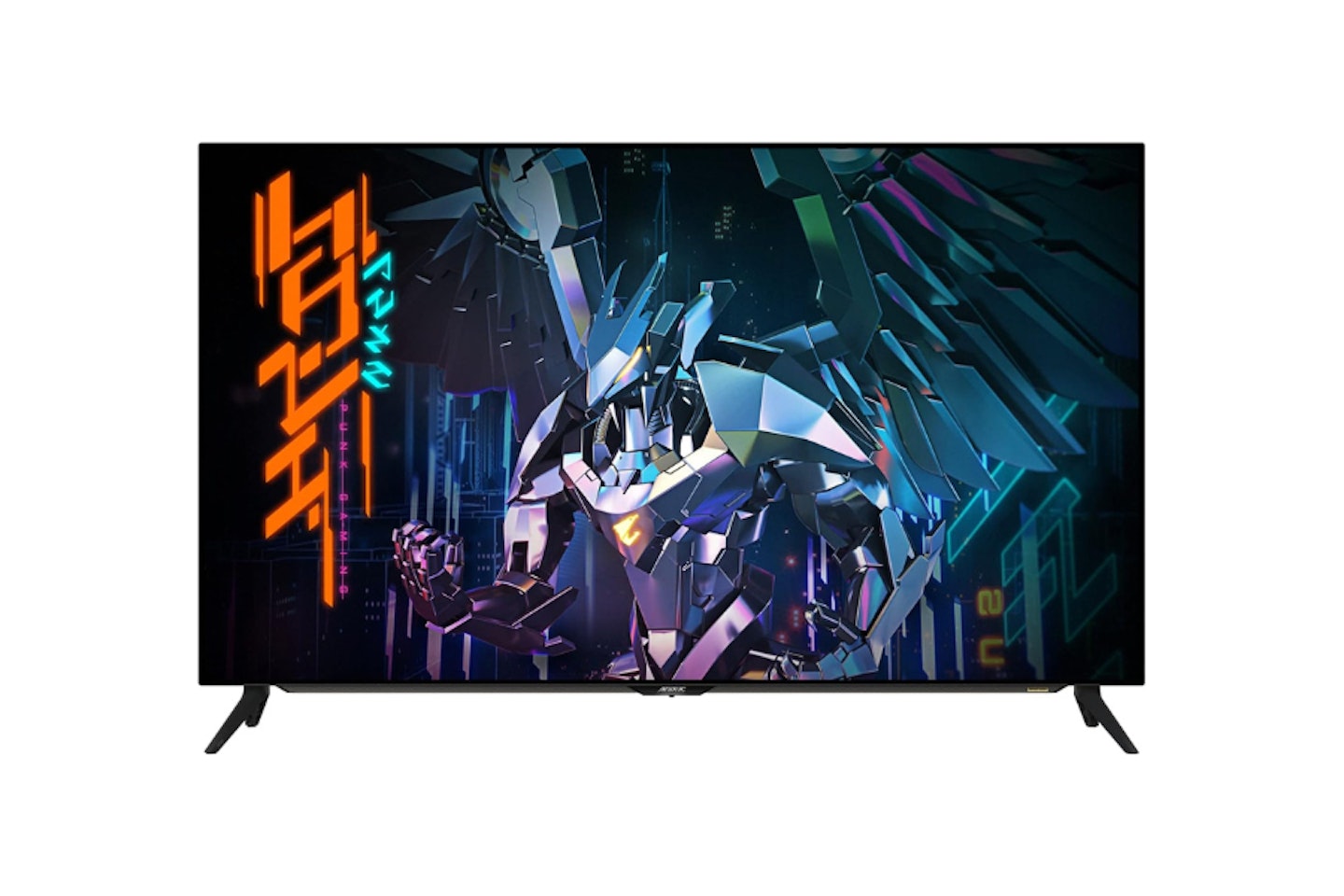 Gigabyte
Gigabyte An outlier in the monitor market, the gigantic Gigabyte AORUS FO48U 4K monitor is a colossal 48 inches, which sounds far closer to a television than a monitor for most. This monstrous monitor, however, is designed for gamers and is perfect for PlayStation 5 players in search of top-tier visuals.
On paper, you'll notice that the Gigabyte AORUS FO48U has an impressive 1ms response and 120Hz refresh rate, all whilst being an OLED screen. Such specs on a television would likely cost over £1,200, especially at its size, and yet the FO48U remains at less than £800, which is frankly dumbfounding.
This stunning screen is packed with mesmerising technology, the most impressive of which is OLED with a maximum brightness of 900 nits, which is monumentally bright at its price. Visually, and for its price, the Gigabyte AORUS FO48U is truly tough to beat, but it isn't for everyone.
At 48 inches, using this screen as a monitor is tough. It's better suited to pure gaming, as sitting too closely isn't going to yield much practicality, but even from afar, should you have enough space, this is an awkward monitor to use.
Be that as it may, for the sheer size and unbeatable quality, this monitor oddity is well worth its price, it's truly tough to beat considering its quality.
Pros
- Gorgeous OLED visuals on a huge screen
- Fantastic refresh rate
- Good build quality with plenty of connectivity
Cons
- The screen is enormous and resembles a television
| Resolution: | 4K Ultra HD, 3840 x 2160 pixels |
| Screen size: | 48 inches |
| Screen type: | OLED |
| Refresh rate: | 120 Hz |
| Response time: | 1 ms |
| HDR: | Not specified |
| Ports: | HDMI 2.1 x 2, DisplayPort 1.4 x 1, USB Type-C x 1, USB 3.0 x 3, USB 3.0 x 3 |
| Colour support: | 98 per cent DCI-P3 |
| Brightness: | 900 nits |
| Viewing angle: | 178 degrees |
Best curved monitor
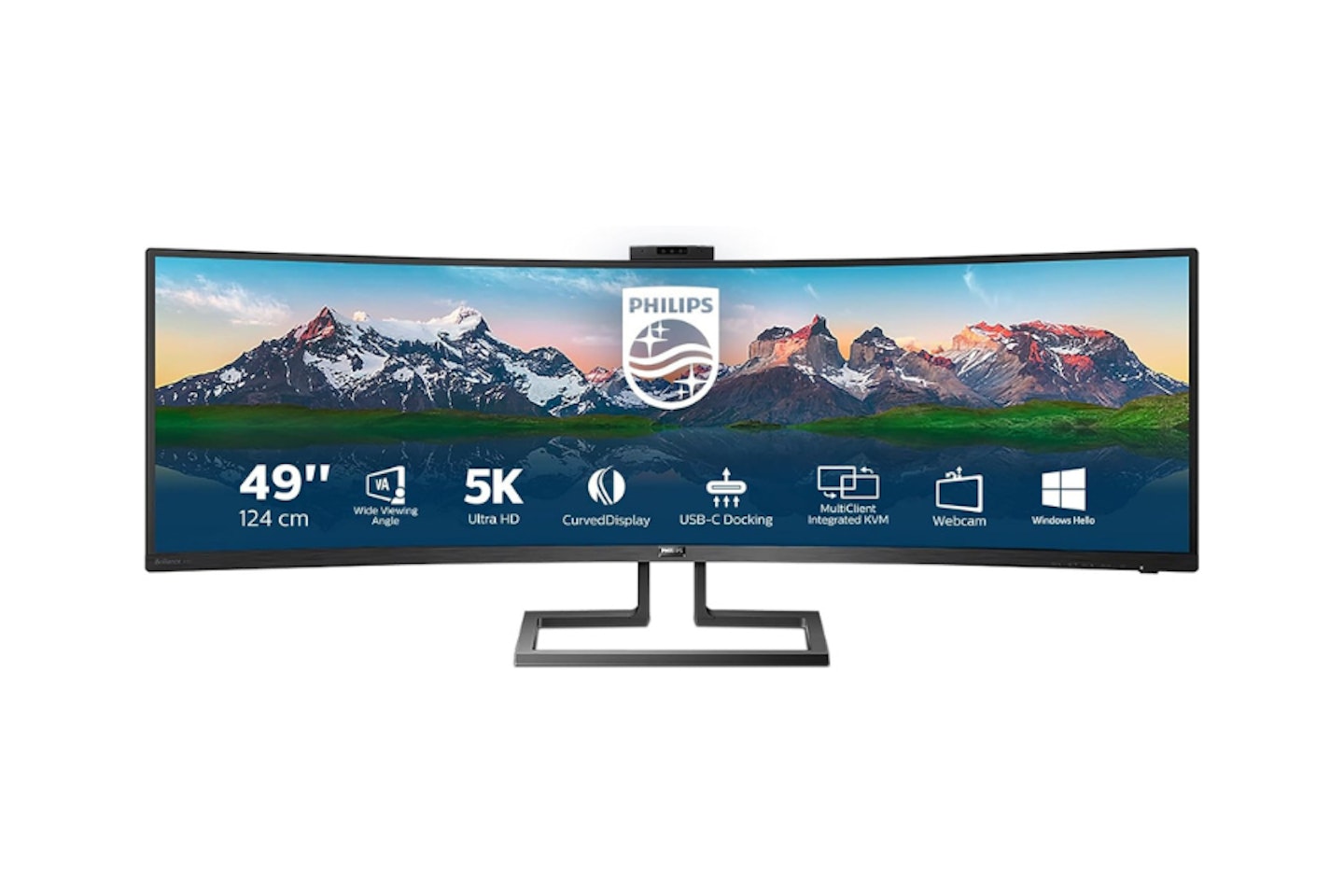 Gigabyte
Gigabyte A truly unique monitor for the bravest and most dedicated of PlayStation 5 players, the Philips 499P9H is perhaps the most immersive monitor on the market this year, and will immerse you like no other monitor available this year.
A whopping 49 inches diagonally, this large monitor has an 1800R curve incorporated in its design, enveloping gamers in its gorgeous quad HD glow. Though its resolution isn't quite 4K, its dual quad HD visuals are nonetheless eye-catching and well-utilised by the PlayStation 5's cutting-edge technology.
If we were to nitpick about the Philips 499P9H, we'd certainly note the lower 70Hz refresh rate, not quite utilising the full potential of the next-generation console. Be that as it may, the visuals on the 499P9H are sublime and are tough to beat with any conventional gaming monitor.
One of the best curved gaming monitors of the year, the Philips 499P9H is a terrific choice for those who might afford its fantastic picture quality and its singular levels of immersion.
Pros
- Impressive ultrawide screen
- Solid dual QHD visuals
- Gorgeous build quality and design
Cons
- Fairly low 70Hz refresh rate
| Resolution: | Dual QHD, 5120 x 1440 pixels |
| Screen size: | 49 inches |
| Screen type: | Curved VA panel with an 1800r curvature |
| Refresh rate: | 70Hz |
| Response time: | 5 ms |
| HDR: | VESA-certified DisplayHDR 400 |
| Ports: | HDMI 2.0 x 2, DisplayPort x 1, USB 3.1 x 3, USB-C x 1, ethernet x 1 |
| Colour support: | 99.8 per cent sRGB, 88 per cent DCI-P3 |
| Brightness: | 450 nits |
| Viewing angle: | 178 degrees |
Best under £80
Precision, power, value: the MSI Pro MP223 is perhaps one the very best monitors under £100 on the market, offering rock-steady specifications at a highly competitive price. Out of the gate, the MSI Pro MP223's bright full HD screen with 100Hz refresh rate support seems almost impossible for less than £70, and yet here it is, in all its glory.
When paired with a PS5, performance is nothing but exceptional: reaching 100Hz, gamers can experience terrific gameplay smoothness at vastly cheaper prices than other monitors on the market. Though full HD visuals aren't as rich and detailed as ultra-HD, and the overall visual and performance experience of the MP223 doesn't quite reach the heights of pricier monitors on the market, you'll find the overall quality to be particularly impressive at such a low cost.
Impressively slim and well-designed, few monitors reach the absolute value of the MSI Pro MP223 monitor, it's a brilliant option for PS5 gamers and casual users alike.
Pros
- Fantastic value monitor
- Solid full HD visuals for price
- Great 100Hz refresh rate
Cons
- Doesn't quite compete visually with other more expensive monitors
| Resolution: | Full HD, 1920 x 1080 pixels |
| Screen size: | 21.45 inches |
| Screen type: | VA |
| Refresh rate: | 100 Hz |
| Response time: | 1 ms |
| HDR: | Not supported |
| Ports: | HDMI x 1, VGA x 1 |
| Colour support: | Not specified |
| Brightness: | 250 nits |
| Viewing angle: | 178 degrees |
How to choose the best monitor for your PS5: Buyer's guide

What is resolution?
The PS5 outputs at 1080p (1920 x 1080) and 4K (3840 x 2160). While 1080p is the more accessible resolution, 4K will give a sharper image. The PS5's output quality is determined by refresh rate, response time and panel type.
1440p (sometimes called QHD) monitors are very popular with PC gamers as they offer a very sharp mid-point between full-HD and 4K screens, are capable of hitting high refresh rates and are reasonably priced. Thanks to an update in 2022, the PS5 does support native 1440p now, as well as 1080p and 4K UHD.
What is refresh rate?
The refresh rate is measured in Hertz (Hz). It refers to how many times a screen completely reloads the display every second.
A 60Hz image will refresh 60 times a second, while a 120Hz screen will refresh 120 times. Therefore, the higher the refresh rate, the smoother the image – low refresh rates can make fast-paced content appear to drag, stutter and jolt.
The refresh rate of the PS5 varies depending on its resolution settings and the game being played. Due to limits on data transfer, the console can play a maximum of 4K UHD/60Hz and 1080p/120Hz.
What is response time?
Response time is measured in milliseconds (ms) and refers to the speed at which a pixel can change colour. The lower the number, the better - especially for fast-paced games.
Gaming monitors typically sit under 5ms, with the very best clocking at 1ms. So, response time works closely with refresh rate to ensure that images are free from ghosting and blur.
HDMI and DisplayPort – a quick guide
Port interfaces directly relate to the resolution and refresh rate a monitor can attain. More recent iterations of the HDMI and DisplayPort interfaces can transfer larger volumes of information, thus allowing higher refresh rates and resolutions.
Linking your gaming console to the correct port and with the right cable will ensure that your monitor performs at its best. Here's a quick guide breaking down the maximum refresh rates and resolutions for HDMI and DisplayPort connections:
HDMI 1.4 – 120Hz at 1080p, 75Hz at 1440p, 30Hz at 4K
HDMI 2.0 – 240Hz at 1080p, 144Hz at 1440p, 60Hz at 4K
HDMI 2.1 – 120Hz at 4K, 60Hz at 8K UHD
DP 1.2 – 240Hz at 1080p, 165Hz at 1440p, 75Hz at 4K
DP 1.3 – 240Hz at 1440p, 120Hz at 4K, 60Hz at 5K, 30Hz at 8K
DP 1.4 – 144Hz at 4K, 120Hz at 5K, 60Hz at 8K
An important note about HDMI 2.1
The HDMI version of the monitor is very important for the PS5. If you want 4K content up to 120Hz, you'll need the extra bandwidth that HDMI 2.1 will give you. If you hook up the PS5 to a lower version of HDMI, it will still work - you just won't be able to use it for those higher resolutions with the top refresh rate.
What's a monitor panel?
There are three main types of panels used in the manufacture of monitors, each with its pros and cons to consider:
Twisted nematic (TN) panels are affordable and carry impressive response times and refresh rates. However, they often have limited colour depth and restrictive viewing angles.
In-plane switching (IPS) panels have arresting colour depths and wide viewing angles. IPS panels are also known to glow, but this is getting better in recent years. For many, this is a panel of choice for gaming and design work.
Vertical alignment (VA) panels have a colour depth and viewing angle sitting between TN and IPS. On affordable options, the response times tend to be less than impressive.
What's a GPU and what does it mean for PS5 gamers?
The GPU, or the Graphical Processing Unit, is a component dedicated purely to handling demanding computing tasks such as graphics rendering at high speeds, which is an essential part of gaming in general.
A solid GPU has a good amount of VRAM, a temporary storage much like that found in your RAM. This ensures that large amounts of data can be temporarily stored for graphical processing.
The PS5 doesn't use a typical GPU you might find in a PC, but rather an integrated graphics card that's part of the AMD RDNA architecture. Despite being integrated, however, which is typically not as impressive, the GPU runs at the equivalent power of AMD's Radeon RX 6700 GPU, which is more than capable of running 4K games at 120Hz even with ray tracing.
<strong>FAQs</strong>
Can I use a PS5 with an ultrawide monitor?
Since 2022, the PlayStation 5 can now support ultrawide monitors, which typically have a quad-HD (1440p resolution). Ultrawide monitors offer players a gorgeous curve and immersion that's otherwise impossible on a standard screen. Ultrawide monitors, however, are typically expensive, so some budgeting might be required.
What's better: a higher resolution or more frames?
A question fraught with division, speed or picture quality has been a point of contention for countless gamers, and choosing a great PS5 monitor has a major impact on both. We don't have a definitive answer to this question, but we certainly see the benefits of both:
The case for resolution
Full HD is the resolution that most people are used to now - it's a popular, inexpensive, reasonably capable, and ubiquitous resolution. It's also able to support very high frame rates. Choosing full HD isn't going to yield the beauty of a true 4K UHD monitor, but it does offer incredible performance at a fraction of the price.
4K UHD has a far greater amount of pixels and, therefore, a far greater level of detail, texture and contrast. When it comes to the PS5, ray tracing also comes into play. This very advanced technology gives stunning lighting and reflections, making for a more realistic visual experience.
4K monitors that can handle 120Hz are considerably more expensive than standard 60Hz monitors, so purchasing one might set you back a lot more money than you expected. Great resolution ensures that you're experiencing PS5 games the way they were meant to be experienced, at quadruple the picture quality of standard full HD.
The case for frames
The frame rate (fps) and refresh rate (Hz) refer to the same visual experience: how many times a screen shows an image every second. 30fps is equal to 30Hz, 60fps to 60Hz and 120fps to 120Hz.
The more frames you have, the smoother and cleaner an image appears. The human eye doesn't see the word as a series of still images - so the more frames there are, the more fluid and natural an image appears. Effectively, higher frame rates are better at tricking your brain.
It's not as easily demonstrated at 1080p versus 4K UHD, as the result is far more nuanced (plus, it requires that you've got the tech to handle the higher frames). However, there's an established tradition amongst PC gamers that, while a gaming PC might be capable of 4K/30fps, dropping to 1080p at 60-120fps is far preferable.
Why use a monitor for the PS5 instead of a TV?
The PS5 offers more than just rapid loading times. One of its most notable specifications is its 10.3 teraflop graphics processing unit. This GPU is capable of pushing out 1080p at 120Hz and 4K UHD at 60Hz. In real terms, these numbers mean that the best PS5 games will run with incredible detail and image smoothness – both of which are key to truly experiencing what the new era of console gaming can offer.
Although impressive and compatible with all consoles, most 4K televisions just aren't up there with the best monitors for PS5 gaming when it comes to the combination of high refresh rates and specialist gaming features like G-Sync, AMD Freesync and special gamer overlays for crosshairs and the like. Yes, you can find 4K TVs with many of these features, but they will cost you more and potentially deliver less.
Ryan Houghton is a Tech Writer and Reviewer for What’s The Best, known best for his expertise in gaming, with a particular soft spot for PC gaming, audio tech, televisions and smartphones.
Diligently writing for What’s The Best for almost two years, there are very few tech products Ryan hasn’t had his hands on to review; televisions, headphones, folding phones and even LEGO, if it’s nerdy, he’ll be there.
His well-versed history as one of the resident techies at What’s The Best has kept him keen to uncover the very best deals, savings and offers for those in need of a cracking deal to upgrade their setup.
In his downtime, Ryan most likely has his nose buried in a fantasy book, or his eyes glued to a screen whilst playing a tough-as-nails Soulslike or leisurely RPG, indulging in most forms of escapism where possible.
Subscribe to the What’s The Best Newsletter to keep up to date with more of the latest reviews and recommendations from the rest of the What’s The Best team.











